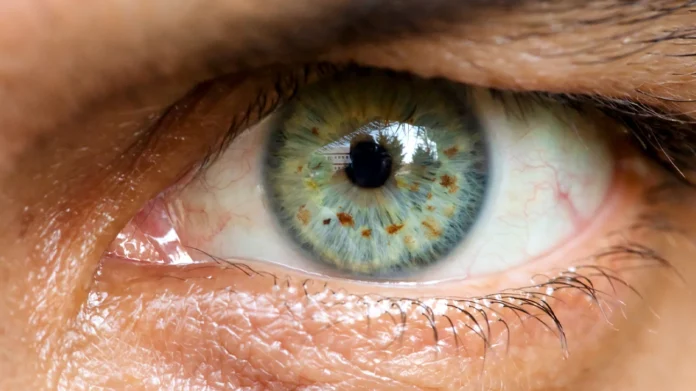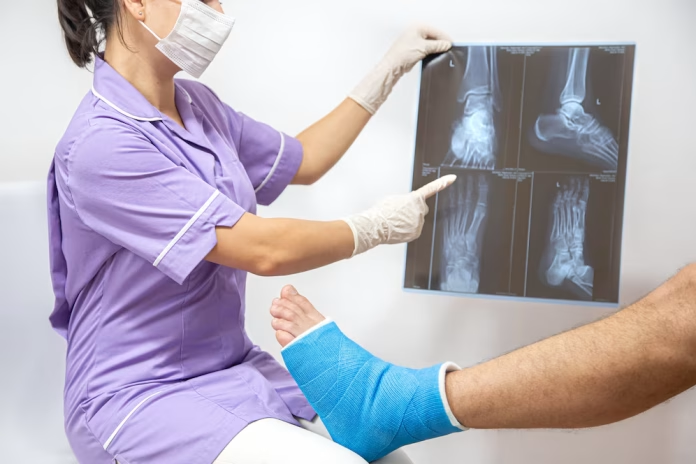Brown spots, also known scientifically as “lentigines,” or colloquially as age spots, are a common dermatological concern that manifests not just on the skin but can also occur in the eye area, particularly on the sclerae (the white part of the eyes). These blemishes are caused primarily by excess melanin production.
Melanin is the natural pigment responsible for the color of our skin, hair, and eyes, produced by specialized cells known as melanocytes. Factors that lead to increased melanin distribution include UV exposure, aging, hormonal changes, and certain genetic predispositions. When these melanocytes are stimulated excessively, heightened melanin production can cause localized areas of pigmentation, resulting in brown spots.
This biologic response is often the skin’s mechanism for protecting deeper tissues from UV damage, leading to the development of these spots as a sort of protective measure while they may serve a purpose in the short term, their presence over time can lead to aesthetic concerns and raise questions about skin and eye health.
Common Types of Brown Spots: Distinguishing Between Varieties
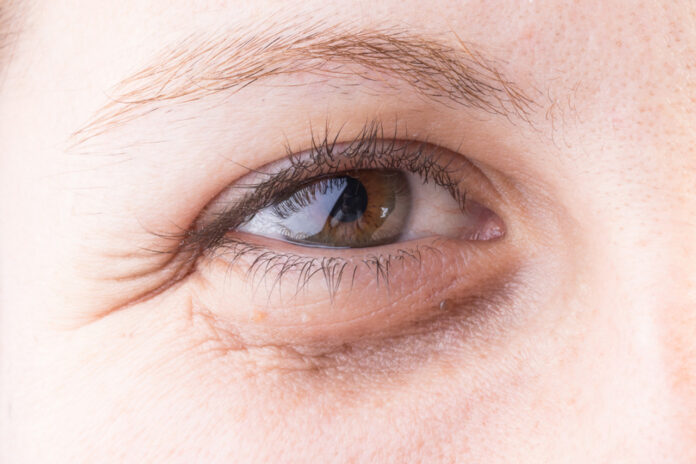

Not all brown spots are the same, and recognizing their differences is essential for accurate diagnosis and treatment. Brown spots on eyes can appear in various forms, including solar lentigines, often called liver spots or sunspots, which develop due to prolonged sun exposure.
Another common type is a nevus, or mole, which consists of clustered melanocytes and can range in color from light brown to black. Nevi near the eyes should be monitored for any changes, as alterations in their size, shape, or color may require further medical evaluation.
Additionally, some congenital or juvenile nevi, present from birth, may manifest as brown spots on eyes, warranting periodic assessment to rule out potential complications. Certain dermatological conditions, such as melasma, can also contribute to pigmentation changes, leading to brown or gray-brown patches around the eyes, particularly in women.
Because each type of pigmentation has distinct causes and implications, consulting a skincare professional is crucial when changes in appearance suggest an underlying health concern.
When Is a Brown Spot More Than Just a Spot? Signs to Watch For
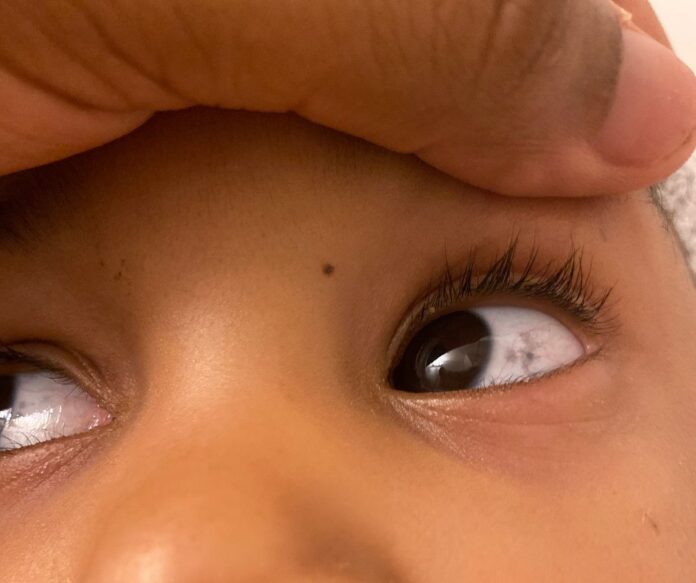

While many brown spots are benign, certain characteristics could indicate a need for medical evaluation. Modeled on the ABCDE rule, specific cues can help individuals identify whether a brown spot necessitates further investigation.
An Asymmetry: if one half of the spot does not match the other; B Border: if the edges are irregular, ragged, or blurred; C Color: if the color is not uniform and includes shades of brown, black, or even red; D Diameter: if the spot is larger than 6mm (about the size of a pencil eraser); E Evolving: if the size, shape, or color of the spot changes over time.
Notably, brown spots that cause discomfort, itching, or bleeding should be evaluated promptly, as these could signal more serious conditions, including skin cancer. Regular self-examinations, paired with routine dermatological check-ups, are vital components of proactive skincare, empowering individuals to take control of their health and well-being.
Identifying Symptoms: What Your Brown Spots Might Be Telling You
Beyond Aesthetics: The Emotional Impact of Visible Brown Spots
The emotional ramifications of having visible brown spots cannot be understated. People often experience a range of sentiments from embarrassment to anxiety when confronted with skin imperfections. The perception of beauty, heavily influenced by societal standards, can lead to a significant psychological burden for individuals dealing with skin blemishes.
The impact of brown spots extends beyond mere aesthetics, affecting self-esteem, self-image, and social interactions. In some instances, individuals may avoid social situations or public outings, leading to a potential sense of isolation and diminished quality of life.
Studies have shown that skin conditions deeply affect personal and professional relationships; therefore, addressing these concerns not only includes treatments but may also encompass psychological support or counseling to help individuals cope with their feelings while managing conditions affecting their skin.
Accompanying Symptoms: What to Look For Beyond the Surface
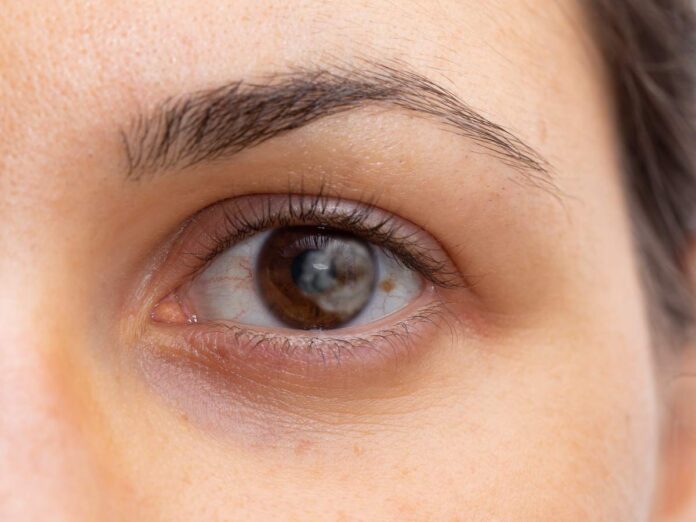

Brown spots may present alongside various accompanying symptoms that warrant attention. Oftentimes, they can indicate underlying health conditions, leading to symptoms such as irritation, swelling, or discoloration of adjacent areas. For example, combined with red or itchy eyes, brown spots could signify certain allergic reactions or exposure to irritating substances.
In some cases, brown spots that are associated with pain or discomfort could be symptomatic of more severe conditions, including actinic keratosis precursor lesions that may develop into skin cancer, especially if located in areas of significant sun exposure.
Moreover, the presence of systemic symptoms such as fatigue, unexplained weight loss, or changes in appetite, coupled with the emergence of brown spots, may necessitate professional evaluation to rule out conditions such as hormonal imbalances or other systemic disorders. Taking a holistic approach toward understanding these signs can be beneficial for maintaining overall health.
Age, Genetics, and Lifestyle: Who’s Most at Risk?
Several factors contribute to the risk of developing brown spots, with age being one of the most significant. As individuals age, the skin undergoes numerous changes, which can include a decrease in cell turnover and the cumulative effects of sun damage, leading to increased pigmentation.
Genetics also play a critical role; individuals with a family history of hyperpigmentation or skin conditions may be at a heightened risk for developing brown spots. Lifestyle choices, particularly regarding sun exposure and skincare routines, can further influence the appearance of these spots.
For example, individuals who frequently sunbathe without adequate protection such as sunscreen and protective clothing are at a greater risk of developing unwanted pigmentation, especially on delicate areas like around the eyes.
Smokers and those who experience chronic stress may also see accelerated skin aging and pigmentation changes. Understanding these risk factors can pave the way for proactive measures to mitigate and manage the appearance of brown spots while promoting overall skin health.
Treatment Options: How to Tackle Brown Spots Effectively
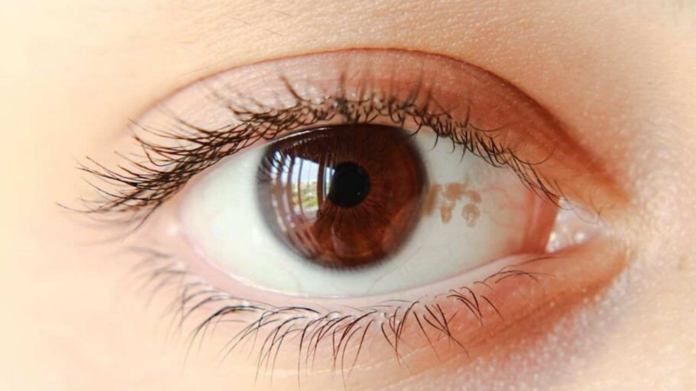

At-Home Remedies: Are DIY Treatments Worth Your Time?
Many individuals seek DIY solutions for managing brown spots, gravitating toward ingredients known for their skin-regenerating properties. Topical agents such as lemon juice, which contains citric acid, may exhibit mild exfoliating effects, while over-the-counter products containing hydroquinone, glycolic acid, or retinoids can potentially lighten pigmentation.
Natural remedies such as apple cider vinegar and aloe vera are sometimes touted for their purported benefits in enhancing skin radiance and evening out discoloration. However, the efficacy of these methods often varies from person to person. It’s crucial to approach DIY remedies with caution as they may not yield significant results, and in some instances, improper application may lead to skin irritation or exacerbation of the problem.
While at-home treatments may serve as complementary strategies, they should not replace professional guidance, particularly for those with persistent or severe cases of brown spots.
Professional Solutions: When to Consult a Dermatologist
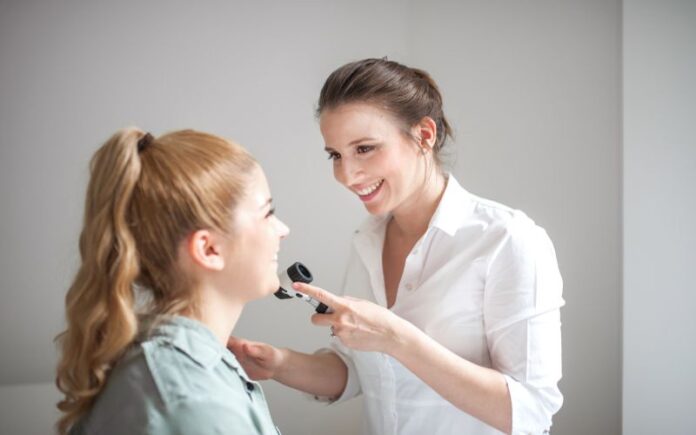

For those seeking tangible results beyond DIY approaches, consulting a dermatologist is a wise choice. Dermatologists can provide comprehensive assessments of individual cases and recommend targeted treatments such as chemical peels, which utilize acids to remove layers of skin, thereby promoting the growth of new, evenly pigmented skin.
Laser therapy is another advanced option that uses concentrated light beams to target specific areas of hyperpigmentation, effectively breaking down the excess melanin and enabling the skin to heal more evenly. Additionally, cryotherapy utilizing extreme cold to destroy abnormal skin cells can be effective for certain types of brown spots.
These professional treatments often require a series of sessions for optimal results, and sustained follow-up is crucial to monitor skin health and prevent recurrence. Take note that pre-existing conditions or medications may influence treatment options; thus, a thorough discussion with a healthcare provider is paramount.
Innovative Technologies: Emerging Treatments You Should Know About
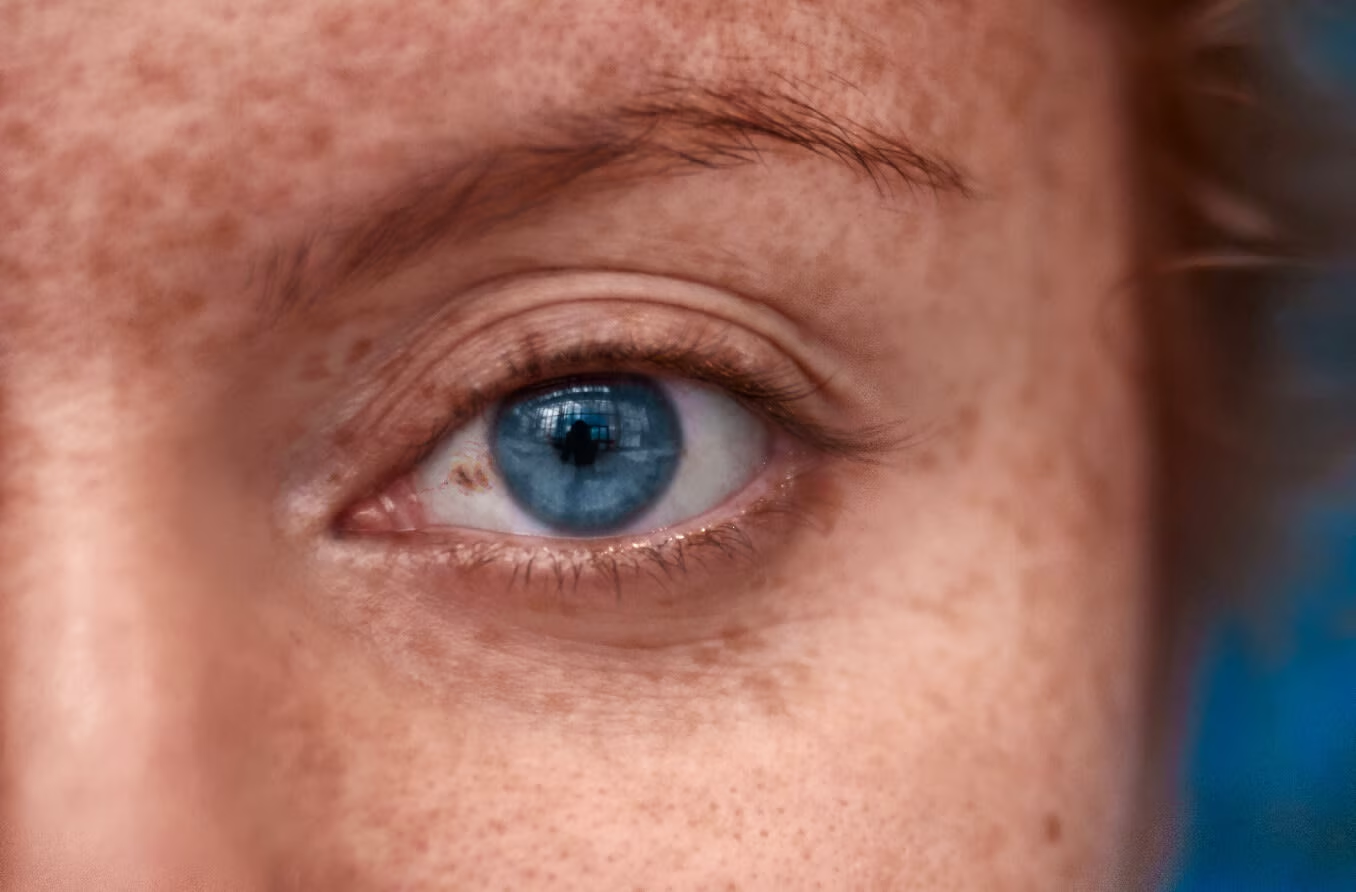

The field of dermatology is constantly evolving, leading to the development of innovative treatment technologies aimed at minimizing pigmentation challenges. One notable advancement has been the introduction of fractional laser therapy, which targets minuscule areas of skin to promote rapid healing and rejuvenation while significantly reducing pigmentation spots.
Radiofrequency micro needling is another burgeoning technique, combining the benefits of micro-injuries with radiofrequency energy to stimulate collagen production, improving skin texture, and reducing the appearance of brown spots. Additionally, the advent of non-ablative lasers offers a gentler alternative, allowing for effective pigmentation treatment with minimal downtime.
Emerging topical treatments featuring new active ingredients like tranexamic acid, which has been shown to block pathways leading to increased melanin production, are gaining traction as well. Keeping abreast of these hair-raising developments in treatment options can empower individuals dealing with brown spots to make informed decisions about their skincare journey.
Preventive Measures: Keeping Your Skin Spot-Free in the Future
Sun Protection Strategies: The Best Practices to Embrace
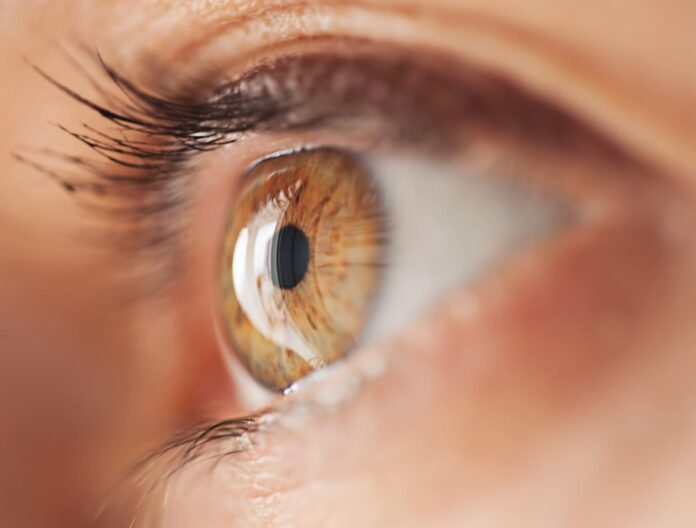

Effective prevention begins with robust sun protection strategies. Ultra-violet rays are a fundamental contributor to the development of brown spots, and thus incorporating a sunscreen with a high SPF preferably broad-spectrum protection into your daily skincare routine is essential.
Reapplication every two hours when outside, using water-resistant formulas during swimming or excessive sweating, and opting for protective clothing, hats, and sunglasses can further reduce UV exposure. Additionally, being proactive about seeking shade during peak sun hours (typically 10 a.m. to 4 p.m.) will help mitigate the risk of skin damage.
Engaging in regular skin assessments, coupled with protection, forms a robust defense against unwanted pigmentation. Awareness and consistent application of these methods are vital in promoting long-term skin health and minimizing the chances of developing brown spots.
Healthy Lifestyle Choices: How Diet and Hydration Can Help
A holistic approach to skin health underscores the importance of sound nutrition and hydration. Consuming a balanced diet rich in antioxidants found in fruits and vegetables such as berries, spinach, and citrus can provide the body with essential nutrients that combat oxidative stress and promote skin rejuvenation.
Omega-3 fatty acids, prevalent in fish, nuts, and seeds, can help maintain the skin’s lipid barrier, keeping it hydrated and less susceptible to damage. Furthermore, adequate hydration is instrumental in skin health; it assists in maintaining skin elasticity and promoting optimal physiological function.
Limiting the intake of processed foods and excessive alcohol can also support skin health, allowing for enhanced healing and a lower risk of brown spot formation. Adopting these lifestyle choices creates a nourishing environment for the skin, helping to stave off the effects of aging and environmental damage.
Skincare Routines: Products and Practices for Maintenance
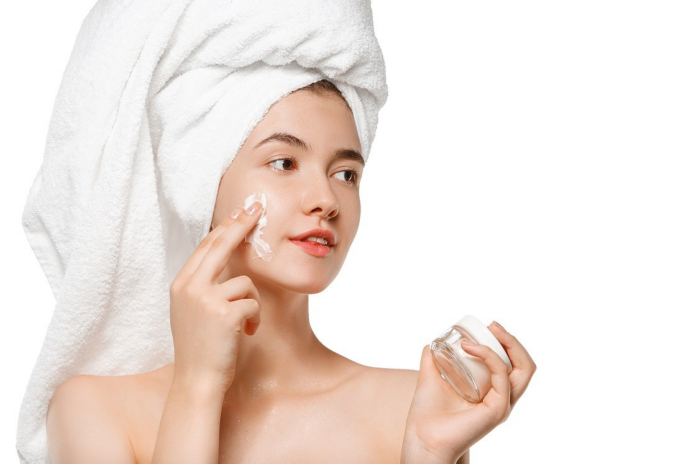

Developing a dedicated skincare routine fortified with protective and reparative products plays a crucial role in maintaining skin clarity and health. Incorporating serums or creams with active ingredients such as vitamin C, niacinamide, or licorice root, all known for their ability to inhibit melanin production can be effective in both prevention and mitigation of brown spots.
Additionally, incorporating gentle exfoliants both physical and chemical can aid in the skin’s natural turnover process, promoting healthy, radiant skin while reducing the likelihood of pigmentation. Moisturizers containing hydration-boosting ingredients such as hyaluronic acid or glycerin can maintain skin balance and resilience.
Lastly, being consistent with these routines, while also being adaptable to any skin changes or concerns, fosters an environment that inhibits the formation of brown spots and facilitates overall skin health. Consider periodic updates to the skincare regimen, ideally in consultation with dermatology professionals, to ensure its ongoing effectiveness and integrity.

